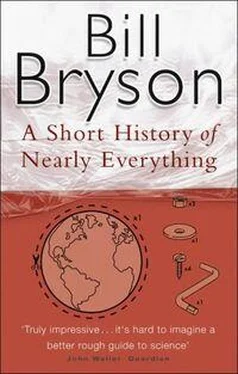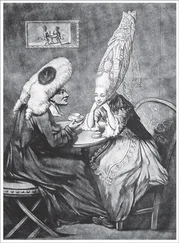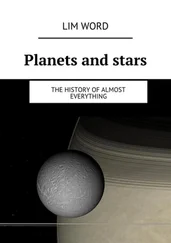So if the ideas of relativity seem weird, it is only because we don’t experience these sorts of interactions in normal life. However, to turn to Bodanis again, we all commonly encounter other kinds of relativity-for instance with regard to sound. If you are in a park and someone is playing annoying music, you know that if you move to a more distant spot the music will seem quieter. That’s not because the music is quieter, of course, but simply that your position relative to it has changed. To something too small or sluggish to duplicate this experience-a snail, say-the idea that a boom box could seem to two observers to produce two different volumes of music simultaneously might seem incredible.
The most challenging and nonintuitive of all the concepts in the general theory of relativity is the idea that time is part of space. Our instinct is to regard time as eternal, absolute, immutable-nothing can disturb its steady tick. In fact, according to Einstein, time is variable and ever changing. It even has shape. It is bound up-“inextricably interconnected,” in Stephen Hawking’s expression-with the three dimensions of space in a curious dimension known as spacetime.
Spacetime is usually explained by asking you to imagine something flat but pliant-a mattress, say, or a sheet of stretched rubber-on which is resting a heavy round object, such as an iron ball. The weight of the iron ball causes the material on which it is sitting to stretch and sag slightly. This is roughly analogous to the effect that a massive object such as the Sun (the iron ball) has on spacetime (the material): it stretches and curves and warps it. Now if you roll a smaller ball across the sheet, it tries to go in a straight line as required by Newton’s laws of motion, but as it nears the massive object and the slope of the sagging fabric, it rolls downward, ineluctably drawn to the more massive object. This is gravity-a product of the bending of spacetime.
Every object that has mass creates a little depression in the fabric of the cosmos. Thus the universe, as Dennis Overbye has put it, is “the ultimate sagging mattress.” Gravity on this view is no longer so much a thing as an outcome-“not a ‘force’ but a byproduct of the warping of spacetime,” in the words of the physicist Michio Kaku, who goes on: “In some sense, gravity does not exist; what moves the planets and stars is the distortion of space and time.”
Of course the sagging mattress analogy can take us only so far because it doesn’t incorporate the effect of time. But then our brains can take us only so far because it is so nearly impossible to envision a dimension comprising three parts space to one part time, all interwoven like the threads in a plaid fabric. At all events, I think we can agree that this was an awfully big thought for a young man staring out the window of a patent office in the capital of Switzerland.
Among much else, Einstein’s general theory of relativity suggested that the universe must be either expanding or contracting. But Einstein was not a cosmologist, and he accepted the prevailing wisdom that the universe was fixed and eternal. More or less reflexively, he dropped into his equations something called the cosmological constant, which arbitrarily counterbalanced the effects of gravity, serving as a kind of mathematical pause button. Books on the history of science always forgive Einstein this lapse, but it was actually a fairly appalling piece of science and he knew it. He called it “the biggest blunder of my life.”
Coincidentally, at about the time that Einstein was affixing a cosmological constant to his theory, at the Lowell Observatory in Arizona, an astronomer with the cheerily intergalactic name of Vesto Slipher (who was in fact from Indiana) was taking spectrographic readings of distant stars and discovering that they appeared to be moving away from us. The universe wasn’t static. The stars Slipher looked at showed unmistakable signs of a Doppler shift [20]-the same mechanism behind that distinctive stretched-out yee-yummm sound cars make as they flash past on a racetrack. The phenomenon also applies to light, and in the case of receding galaxies it is known as a red shift (because light moving away from us shifts toward the red end of the spectrum; approaching light shifts to blue).
Slipher was the first to notice this effect with light and to realize its potential importance for understanding the motions of the cosmos. Unfortunately no one much noticed him. The Lowell Observatory, as you will recall, was a bit of an oddity thanks to Percival Lowell’s obsession with Martian canals, which in the 1910s made it, in every sense, an outpost of astronomical endeavor. Slipher was unaware of Einstein’s theory of relativity, and the world was equally unaware of Slipher. So his finding had no impact.
Glory instead would pass to a large mass of ego named Edwin Hubble. Hubble was born in 1889, ten years after Einstein, in a small Missouri town on the edge of the Ozarks and grew up there and in Wheaton, Illinois, a suburb of Chicago. His father was a successful insurance executive, so life was always comfortable, and Edwin enjoyed a wealth of physical endowments, too. He was a strong and gifted athlete, charming, smart, and immensely good-looking-“handsome almost to a fault,” in the description of William H. Cropper, “an Adonis” in the words of another admirer. According to his own accounts, he also managed to fit into his life more or less constant acts of valor-rescuing drowning swimmers, leading frightened men to safety across the battlefields of France, embarrassing world-champion boxers with knockdown punches in exhibition bouts. It all seemed too good to be true. It was. For all his gifts, Hubble was also an inveterate liar.
This was more than a little odd, for Hubble’s life was filled from an early age with a level of distinction that was at times almost ludicrously golden. At a single high school track meet in 1906, he won the pole vault, shot put, discus, hammer throw, standing high jump, and running high jump, and was on the winning mile-relay team-that is seven first places in one meet-and came in third in the broad jump. In the same year, he set a state record for the high jump in Illinois.
As a scholar he was equally proficient, and had no trouble gaining admission to study physics and astronomy at the University of Chicago (where, coincidentally, the head of the department was now Albert Michelson). There he was selected to be one of the first Rhodes scholars at Oxford. Three years of English life evidently turned his head, for he returned to Wheaton in 1913 wearing an Inverness cape, smoking a pipe, and talking with a peculiarly orotund accent-not quite British but not quite not-that would remain with him for life. Though he later claimed to have passed most of the second decade of the century practicing law in Kentucky, in fact he worked as a high school teacher and basketball coach in New Albany, Indiana, before belatedly attaining his doctorate and passing briefly through the Army. (He arrived in France one month before the Armistice and almost certainly never heard a shot fired in anger.)
In 1919, now aged thirty, he moved to California and took up a position at the Mount Wilson Observatory near Los Angeles. Swiftly, and more than a little unexpectedly, he became the most outstanding astronomer of the twentieth century.
It is worth pausing for a moment to consider just how little was known of the cosmos at this time. Astronomers today believe there are perhaps 140 billion galaxies in the visible universe. That’s a huge number, much bigger than merely saying it would lead you to suppose. If galaxies were frozen peas, it would be enough to fill a large auditorium-the old Boston Garden, say, or the Royal Albert Hall. (An astrophysicist named Bruce Gregory has actually computed this.) In 1919, when Hubble first put his head to the eyepiece, the number of these galaxies that were known to us was exactly one: the Milky Way. Everything else was thought to be either part of the Milky Way itself or one of many distant, peripheral puffs of gas. Hubble quickly demonstrated how wrong that belief was.
Читать дальше












